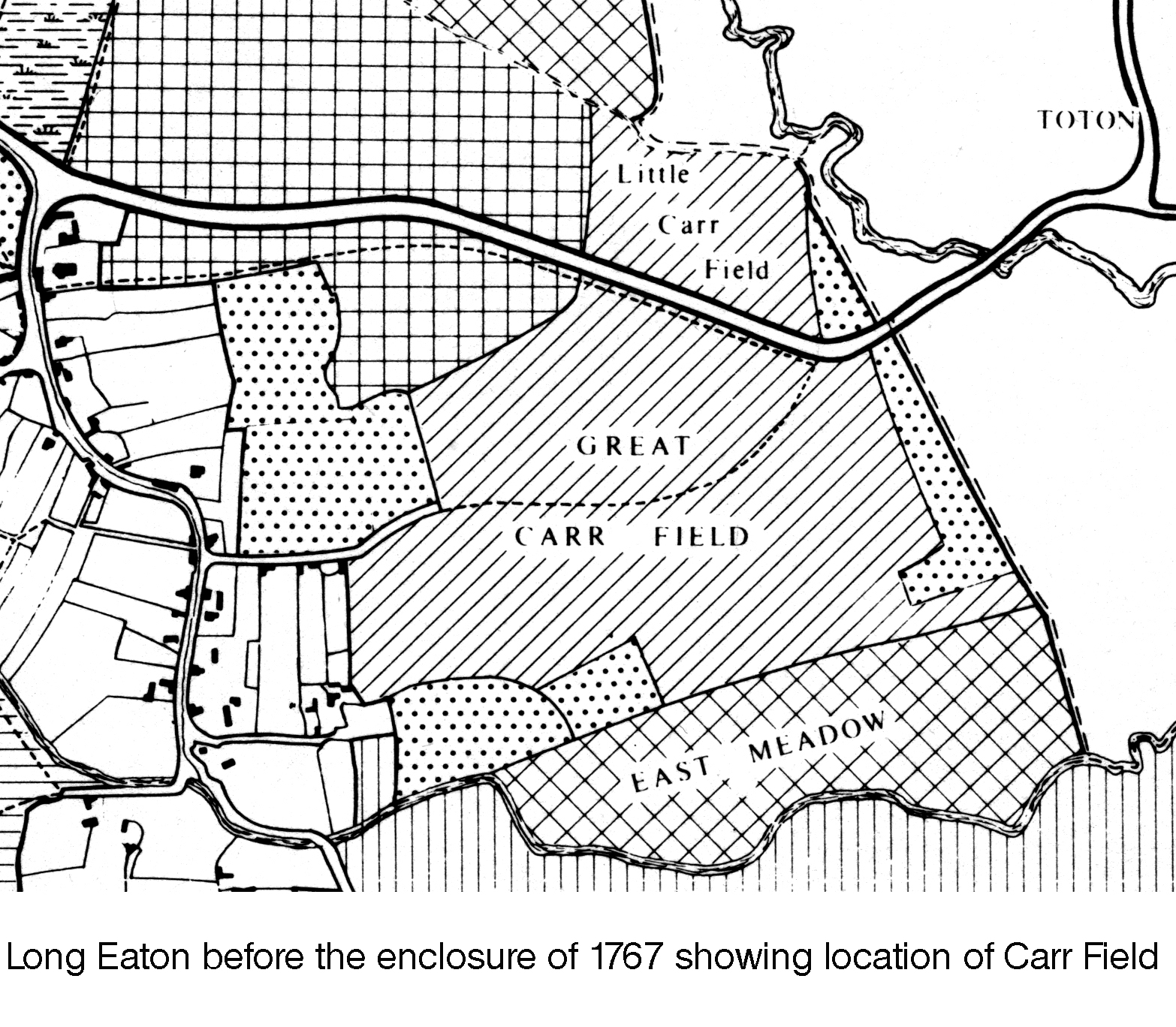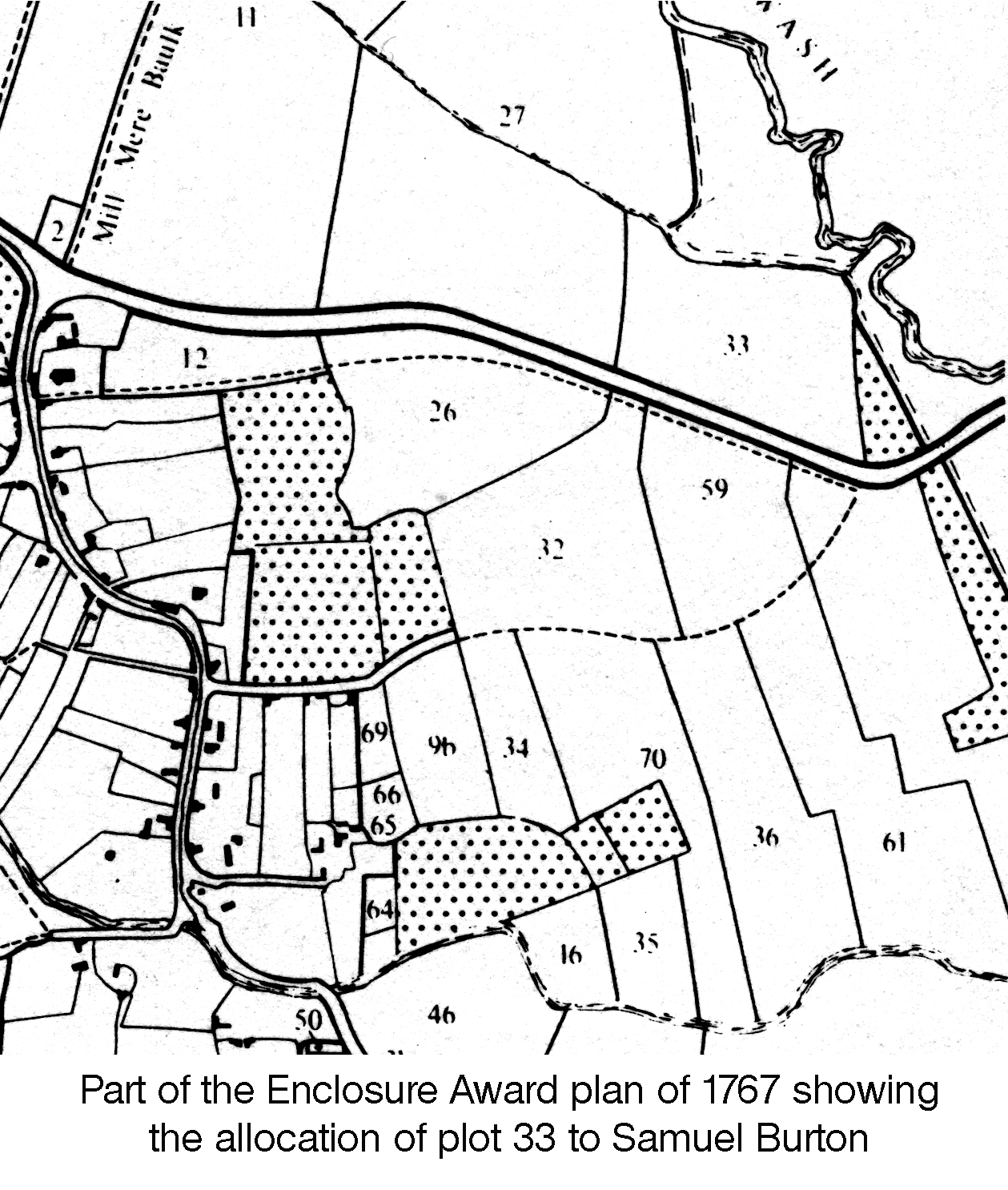Charlton Avenue History
Before the Long Eaton Enclosure Award of 1767, the land on which Charlton Avenue now stands was part of an open arable field called Little Carr Field. Land within the field was in multiple ownership in the form of arable strips, known locally as ‘lands’ or ‘lants’. Only after the enclosure of the open fields was ownership established. The Enclosure Award allotted the part of Little Carr Field where Charlton Avenue is situated, an area of about 13 acres, to Samuel Burton in lieu of some of his former lands and common rights.

Burton is a commonly occurring name in Long Eaton, but no other record is known of Samuel Burton at this date. Burton’s allotment was subdivided into two roughly equal parts by 1830 and was then in the ownership and occupation of John Clarke and known by the name ‘Burton’s Close’. From the register of Electors of 1832 we know than John Clarke lived in Chilwell. Clarke no longer owned the land by 1870 (he was probably dead), but the land remained in agricultural use until the six and a half acres was sold to the West End Land Society in about 1904. The architect Walter Woods was almost certainly one of the proprietors who laid out two streets, Carrfield Avenue and Charlton Avenue. The derivation of Carrfield is obvious from the above. Charlton is almost certainly derived from the family of that name which was prominent in Chilwell; they were the owners of much land in the district.

After the setting out of the two streets and the division into plots by Mr Woods, Mr McCracken appears to have been the owner of the first house, number 19. This house was designed, as was the majority, by Mr Woods, the plans having been submitted to the Long Eaton Urban District Council on 31 January 1905 for approval under the Health Regulation Bye-laws. Although Woods designed most of the property in Charlton Avenue, he was not the exclusive architect and others like Dodd designed for purchasers of several other plots. Woods did, however, design a house for himself, 38 Carrfield Avenue, the application for which was submitted in October 1906. This house is of a much more modern appearance than those he was designing for speculation or rental on the estate. For instance, he had an inside w.c. in his upstairs bathroom where mostly his contemporary properties had only an outside w.c.
Charlton Avenue was built almost to capacity between 1905 and 1911. Number 42, for Mr Adcock in 1929, was the only dwelling built between the World Wars and was the last plot in the street to be filled before the recent addition of number 40a.